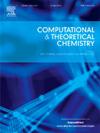Quantitative structure–activity relationship and mechanism of ionic liquids inhibiting spontaneous combustion of ferrous sulfide
IF 3
3区 化学
Q3 CHEMISTRY, PHYSICAL
引用次数: 0
Abstract
Ferrous sulfide is one of sulfur corrosion products generated during the transportation and storage of petroleum. It possesses strong spontaneous combustion properties, potentially leading to fires or even explosions in the petrochemical industry. Ionic liquids, as a new class of green compounds, show promising potential for spontaneous combustion inhibition. In this paper, 60 common imidazolium-based ionic liquids are selected as inhibitors, and the inhibition effect and inhibition mechanism of ionic liquids are studied from the microscopic point of view. The results show that among the 60 imidazolium-based ionic liquids, those with the highest inhibition efficiency are [EMIM]C5H11BF3, [OMIM]CH3COO, and [C12MIM]BF4, and the inhibition efficiencies of the adsorbed molecules are in the following order: H2O > H2S > CH3SH > O2. An appropriate increase in the length of the alkyl chains on the imidazole ring of ionic liquids, as well as the introduction of substituents, can enhance the activity of the molecules, thereby improving their inhibition efficiency. Based on the structural properties and inhibition effect of ionic liquids, a quantitative structure–activity relationship (QSAR) method using quantum chemical descriptors to predict the inhibition effect of ionic liquids is proposed. Five descriptors are identified as the key factors influencing the inhibition efficiency of ionic liquids, with the prediction effect for O2 being the most accurate. The results are of great significance for revealing the mechanism of ferrous sulfide spontaneous combustion inhibited and the prevention and control of spontaneous combustion hazards.

求助全文
约1分钟内获得全文
求助全文
来源期刊

Computational and Theoretical Chemistry
CHEMISTRY, PHYSICAL-
CiteScore
4.20
自引率
10.70%
发文量
331
审稿时长
31 days
期刊介绍:
Computational and Theoretical Chemistry publishes high quality, original reports of significance in computational and theoretical chemistry including those that deal with problems of structure, properties, energetics, weak interactions, reaction mechanisms, catalysis, and reaction rates involving atoms, molecules, clusters, surfaces, and bulk matter.
 求助内容:
求助内容: 应助结果提醒方式:
应助结果提醒方式:


